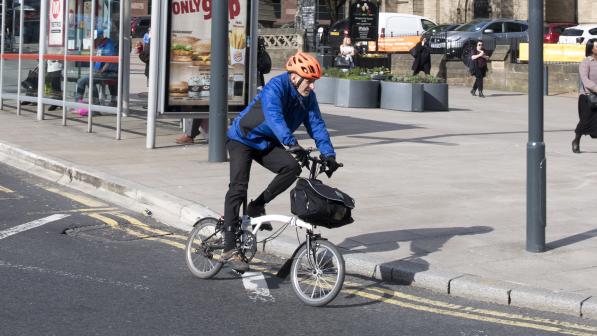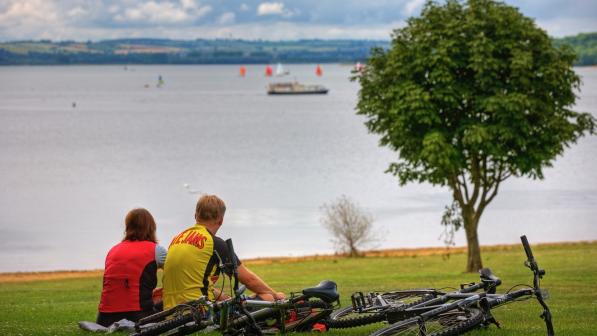The 12 biggest mistakes made by new cyclists
I’ve got a big saddle but I’m still getting a sore bum
Anybody who has ever worked in a bike shop will have umpteen stories about new cyclists who look at a thin road bike saddle, wince, and utter something about it being about as comfortable as sitting on a razor blade. Instead, new riders often think that a veritable cushion of wide squishy, padded saddle is the way to go.
This isn’t necessarily the cast. The most important thing is to pick a saddle that gives you support in the right areas – essentially, underneath your sit bones.
Then put any padding you need where it’s most likely to remain in exactly the right place – and by that we mean use well-fitted padded shorts. Then remember, don’t wear underpants with your padded shorts!
I’m getting tired from riding too much
As a new convert to the joys of cycling you might find yourself wanting to ride for as long as possible and as far as possible. But that isn’t sensible – at least, not to begin with.
Leading on from the sore bum issue, your tolerance to sitting in the saddle and your overall endurance will build up far better with repeated short rides than one-off long efforts, which may have the effect of stalling your progress or even put you off cycling altogether.
Initially, regular steady and relatively short rides will make sure it’s your enthusiasm that keeps burning, not your muscles or soft tissue.
I’m always getting too hot/too cold
There’s a tendency for new cyclists to wear one big waterproof jacket when the weather’s bad, and just a T-shirt when it’s sunny. However, the secret to maintaining the right body temperature on any ride is layering.
Start with a great base layer that wicks away sweat then build up with jerseys, gilets, leg and arm warmers, soft shells and windproof and waterproof jackets. Choose breathable kit that lets perspiration escape if you can afford it, and add or remove layers to suit.
My saddle is too low/too high
This is a common mistake: nervous new cyclists tend to have their saddles too low, which means pedalling is more difficult and they can’t use the full range of their leg power. Meanwhile, more rarely, overconfident cyclists can hike their saddles way up, making pedalling uncomfortable and putting them at risk of injury.
In the simplest terms, you want your saddle height set so there is a very slight bend in your knee when your foot is at the bottom of the pedal stroke. Read Cycling UK’s advice on how to make your bike more comfortable, or if in doubt, pop along to your local bike shop, who should be happy to help.

I order all my cycling kit online because it’s cheaper
Buying online is fine, but a lot of cycling gear – from clothing to upgraded parts – is worth investing in it fits your needs perfectly. Rather than saving a few pennies by buying online, for new cyclists it’s probably far more valuable to have the help of an experienced bike shop member of staff who can guide you.
Yes, in financial terms it might cost a little more, but the guidance you will receive will be invaluable.
I use the wrong gear at the wrong time (part 1)
Even experienced cyclists don’t always know how to use their gears but it’s not tricky. You want to be pedalling at a nice constant speed (or ‘cadence’) almost all the time – not having your legs whirling in a blur or slowly crunching round. Aim for 70-90 revolutions per minute as an efficient, achievable cadence, then change your gears to maintain it.
Don’t worry about the little numbers that might be written in your gear shifter windows saying which gear you’re ‘officially’ using; work by feel and go up or down the gears depending on how easy it is to pedal at your preferred cadence.
I use the wrong gear at the wrong time (part 2)
There are also some specific things not to do with your gears. The first is this: when you come to a climb, don’t keep pushing the same gear you’ve been using on the flat as far as you can up the hill and change only when you have to.
This desperate gear change when the system is under strain is a common reason for chains to come off. Far better is to choose the correct gear for the climb as early as possible and get into a nice steady rhythm.
I use the wrong gear at the wrong time (part 3)
The final thing to avoid is crossing the chain. By that we mean, don’t use the biggest sprocket at the back and the biggest ring at the chainset – or vice versa, the smallest sprocket at the back and the smallest chainring. This causes the chain to operate at an extreme and inefficient angle, rubbing and prematurely wearing your components

I like to keep out of the way and hide at the edge of the road
The saying, ‘give people an inch and they will take a mile’ seems to apply more than anything to road space. If you cycle close to the side of the road because you are nervous, scared or embarrassed, other road users will try to squeeze past when there is not really enough room to do so safely.
You will also put yourself at further risk because drivers aren’t subconsciously expecting to see another road user in that position on the road, and may not notice you.
You could put yourself in further danger of hitting the kerb or puncturing your tyres from debris sitting in the gutter. Ride about a metre from the kerb and be confident.
I need to always be in a cycle lane
Cycling in a cycle lane does not keep you safe. The combination of poorly designed infrastructure and drivers’ lazy thinking means some cycle lanes are not fit for purpose.
If the cycle lane doesn’t allow you to ride a metre from the kerb and have cars passing safely, ignore it all together or ride on the lane’s outside line. That way drivers will have to think and give you proper room rather than believing they’re OK as long as they don’t drive in the cycle lane.
I only use busy roads
If you’ve converted to cycling from driving a car, you may find yourself initially following the same routes that you drive. Why? The whole point of cycling is to explore and enjoy your journey (and to enhance your life), so avoid busy roads where you can and find hidden alleyways, parkland paths and lovely lanes.
You and your bike can go so many more interesting places than motor vehicles can – enjoy using that great privilege to the full. Cycling UK’s Journey Planner can help you find a the quiet streets.
I’m not sure my helmet is on properly
If you choose to wear a helmet, make sure it is on correctly. Wear it the right way round (we’ve seen plenty riders have it on back-to-front), and have it sitting level on your head, protecting both the front and back of your skull, with the straps done up comfortably under your chain. It should cover most of your forehead.
As with everything, your local bike shop can help and should fit your helmet to you if you purchase it from them.


